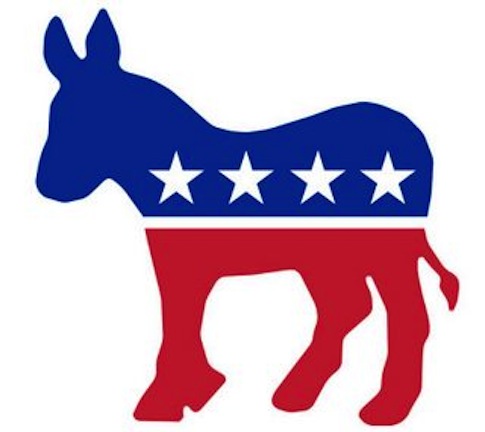Democratic-controlled states throughout the country are experiencing financial difficulty and out-migration.
President Barack Obama’s home state of Illinois, for example, recently had its credit rating downgraded by Standard & Poor’s following a failed effort to reform the state’s massively underfunded pension system. The state’s credit rating is now among the worst in the country.
A new report from the State Budget Crisis Task Force led by former Federal Reserve Chairman Paul Volcker found that Illinois’s state budget "is not fiscally sustainable."
The state’s unfunded pension liabilities exceed $80 billion, the report found. Medicaid liabilities have doubled over the past decade at a rate that "will outstrip revenue growth by a wide margin."
Total pension funds for state and local government workers, many of which are unionized, are underfunded by as much as $3 trillion. Unfunded liabilities for government employee health care benefits exceed $1 trillion, according to the report.
The state’s financial woes, the report found, have been exacerbated by many of the same problems that have plagued the federal government over the last four years, such as a "difficulty in implementing cost reduction proposals."
Illinois lawmakers routinely flout the state’s balanced budget requirement using various "illusory" gimmicks and accounting tricks.
Temporary, stopgap measures are often employed as superficial solutions, but ultimately "avoid or delay hard fiscal decisions" and "mask [the] underlying problems," the report states.
President Obama’s most recent budgets and deficit reduction plans were panned by independent analysts for their overreliance on gimmicks that failed to yield genuine savings.
The president has similarly failed to reach a comprehensive agreement with Congress to alter the country’s unsustainable fiscal course, producing only a series of deferred-action measures such as the controversial $1 trillion "sequestration."
The report’s authors suggest comprehensive tax reform coupled with spending cuts to achieve a legitimate balanced budget.
Thus far, however, the Illinois state legislature has sought to raise revenue by hiking individual and corporate income taxes by more than 60 percent.
Illinois ranked 48th in a recent survey of business leaders regarding the best states for business. Blue states New York and California rounded out the bottom of the list while Republican-led Texas ranked first.
Texas was joined at the top by traditionally conservative states such as Florida, North Carolina, Tennessee, and Indiana.
California is facing its own economic woes. The state is sagging under rapidly increasing salaries and benefits favored by public sector unions, which overwhelmingly support Democratic politicians, despite having the fourth-highest tax burden in the nation.
Massive government pension obligations are "the root problem" for states struggling financially, said Douglas Holtz-Eakin, the former director of the Congressional Budget Office.
"It’s worse in states whose governments are far more favorable to public sector unions," he said. "These are deep structural problems."
California also has a peculiar fascination with expensive taxpayer-subsidized mega-projects such as high-speed rail. The state’s high-speed rail project has been deemed by independent experts to be too costly to proceed despite receiving billions of dollars in the 2009 stimulus package.
Red state economies are performing better than those of blue states by a litany of measures. Personal income growth is higher. Credits ratings are generally better among red states, which have succeeded in reducing their debts burdens by a greater percentage over the past several years.
Three red states—North Dakota, South Dakota, and Nebraska—have unemployment rates below 5 percent.
The relative economic success of red states is also evidenced by significant population growth, William Voegeli recently argued in National Review.
Red states increased their populations by 13.6 percent between 2000 and 2010, according to Census Bureau data, compared with just 5.9 percent for Blue States (the overall population grew by 12.6).
Texas alone, where job growth is among the best in the country, grew by more than 20 percent.
